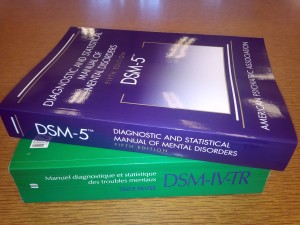- Calls to this hotline are currently being directed to Within Health, Fay or Eating Disorder Solutions
- Representatives are standing by 24/7 to help answer your questions
- All calls are confidential and HIPAA compliant
- There is no obligation or cost to call
- Eating Disorder Hope does not receive any commissions or fees dependent upon which provider you select
- Additional treatment providers are located on our directory or samhsa.gov
Best Practices for Effective Anorexia Treatment

I’ve supervised IOP, PHP, and residential programs from eating disorders. I love a challenge, and those of you who do work with anorexia patients know that there is no greater challenge than trying to break through this challenging disease and provide effective anorexia treatment.
I also love logic, so, I operate on that level and find myself frequently connecting with those individuals struggling with anorexia because we can all live in our heads a little bit.
I have found, as a clinician, that I’ve had the pleasure of learning so many of the therapeutic approaches that are helpful to integrating mind and body and I’ll talk about some of these in this article.
Let’s consider the perceptions of anorexia. This is such an under-recognized disorder. Let’s be honest. Our culture is not in a hurry to identify people who are thin or perfectionist types as problematic.
In my career, I have reached out to teachers and school professionals to discuss meal-planning in school, and they are often even surprised that the individual is struggling. So, culturally, we are working uphill currently in identifying anorexia amongst those who are struggling until it gets really problematic.
Then, when family members or school professionals do notice, it becomes an oppositional fight.
We switch from a smooth ride, where people feel like this is someone who is doing really well, to professionals or family members becoming angry or frustrated and withdrawing from the person and saying “just eat.”
I’ve worked with families for many years, especially teens struggling, and family members, parents especially, become so angry and stuck. Initially, this is such a complicated disorder for that reason; we struggle to recognize it initially and, when we do recognize it, it has often become quite entrenched and is more difficult to treat.
Diagnostic Criteria
The DSM-5, which was released in 2013, recognized minimal changes in the Anorexia Nervosa diagnosis.
The most significant difference was that the symptom of amenorrhea, the idea that you have to be missing your period, was removed, primarily because it doesn’t apply for males and for those teens who are premenstrual.
 Officially, to qualify for anorexia nervosa, you must have a low-weight. I do see a mess often with clinicians where they see restrictions behaviors and other signs of eating disorders, but the individual is at an ideal body weight.
Officially, to qualify for anorexia nervosa, you must have a low-weight. I do see a mess often with clinicians where they see restrictions behaviors and other signs of eating disorders, but the individual is at an ideal body weight.
It is important to consider that, sometimes, in the progression of anorexia, we might not initially see the low-weight, but this is important for a diagnosis later on. Another diagnostic characteristic of anorexia is that persistent restriction. This is not a period of one to two weeks but a significant period of time.
Fear of weight gain is also a criterion for diagnosis that can be a point of confusion. Those issues of low-weight and persistent restriction can exist in other eating disorders or feeding disorders, so this fear of weight gain is another puzzle piece that makes the diagnosis of anorexia.
The final important diagnostic criteria are body distortions. An individual with anorexia looks in the mirror and sees something very different than others who are looking at them.
Part II
To begin, over half of those struggling with anorexia have anxiety disorders. Actually, anorexia was previously thought to be more of an anxiety disorder.
33 to 50% of individuals with anorexia are diagnosed with a comorbid disorder. So, it is important to remember that, often, anxiety and mood disorders occur alongside anorexia.
90% of those with anorexia are female. Now, this also means 10%, 1 out of 10 individuals with anorexia, are men. This can be a struggle because, if we consider that connection is often at the root of the path to recovery, men are very isolated in this disorder and the recovery community.
Also, 85% of individuals with anorexia developed the disorder between the ages of 13 and 18. Many things are going on in adolescence and, so, this disorder is often missed.
This, again, brings up the concept of that uphill battle. If we see an overweight teen, we might be more likely to identify problematic eating behaviors than if we were to see an underweight teen that is working hard to hide their body.
Looking at the overall treatment of anorexia, 46% of individuals are in recovery, which is a really wonderful statistic, and I get to see these numbers daily in my work.
This also means, however, that 53% do not fully recover. 33% partially recover, and 205 remain chronically ill.
That last 20% is really difficult. This is an all-consuming disease for an individual and their family and 20% of individuals, 1 in 5, do not recover and remain chronically ill. This is a statistic we are still working to reduce.
I frequently discuss this statistic with families when I’m engaging them in treatment, letting them know that the mortality rate now occurs less from the biological complications of starvation than from the individual dying from suicide.
I think this says a lot about how painful, conflicting, all-consuming and torturous that these disorders are, that 5% of the time, these individuals choose to end their own lives.
Treatment
First, let me mention that we have made relatively little progress in evidence-based research, so, we do have a lot more research to do in that area and there isn’t quite the investment as far as research dollars.
This is another fight that we as an eating disorder community are making progress in but still working on.
I talk about anorexia treatment as an iceberg. We first notice the fluid restriction, body distortions, and compensatory behaviors and these are the tips of the iceberg.
What we also have to focus on in treatment is what’s underneath. In our culture, we are often only talking about the tip of that iceberg.
Eating is where we often get stuck, but treating these disorders isn’t about the food. It is about attachment, avoidance, controlling yearnings for connection, solving yearnings for connection, and fears.
If you have ever sat at a table or meal with someone struggling, you can feel this emotional content, that this is more complex than the food. We know that there are genetic and environmental components. We have seen twin studies that demonstrate that there is a genetic component.
What has particularly been teased out is that there is an imaginary emotional sensitivity.
A couple of years ago, I was running a parent group very, and I heard parents talk a lot about their children when they were young, and they often talked about seeing emotional sensitivity from a young age.
The individual is learning how to manage this emotional sensitivity, and they attempt to manage it with food and manipulation of that food. With this, there are also many environmental components that can predispose risk as well.
 Important ones are an environment in which emotions are not talked about, accepted, or modeled. This doesn’t give that predisposed, emotionally sensitive child an outlet to manage what is happening in their mind, body, and spirit.
Important ones are an environment in which emotions are not talked about, accepted, or modeled. This doesn’t give that predisposed, emotionally sensitive child an outlet to manage what is happening in their mind, body, and spirit.
We also see poor emotional awareness with eating disorders. Individuals with anorexia are often in their heads. When you do a mindfulness treatment with someone with anorexia, it may take a long time to get them into that practice.
Additionally, when you process with them afterward, you will get a lot of “here is what I thought” instead of “here is what I noticed in my body/my feelings.”
These individuals are often emotionally over-controlled, and this leads to poor emotional awareness. It is important to recognize, then, that their disorder has served a function and often helped them avoid upsetting experiences.
It is then understandable that it becomes a pattern and dealing with that pattern then takes long-term treatment. Remember, also, that malnutrition can further impact these factors and become a barrier to treatment as well.
There is preliminary research indicating that restricting behavior, long-term, can slow down the demyelination process of the neurons, which slows down emotional impulses, and helps the individual avoid experiencing those emotions, further reinforcing the negative patterns.
Part III
Factors in Anorexia Treatment
Relationships
One very important component of key factors in anorexia treatment is that relationships are incredibly important. There is a high level of inhibition with anorexia and relationships, trust, and attachment can help to lower that inhibition.
As such, there is some evidence of interpersonal psychotherapy being effective for that reason.
I have often seen that individuals will build trust or attachment to a staff member in treatment that member becomes the only one who can get them to drink water or try any eating. These powerful relationships become a foundation for treatment.
I treated a young woman, several years ago, who came to us from another program where she had struggled. They did an outstanding job with all of the evidence-based research and said, “we’ve tried everything with no success, so we are sending her to you.”
She came into the program, and I remember sitting at meals with her and talking about her favorite book. We spent time getting to know one another and building relationships and, over those relationships, is when we had her challenging meals.
Those relationships began to make a difference in behavior and made the evidence-based practices that we’re using much more powerful.
Mind-Body Integration
Individuals with anorexia are often “in their own head’s,” so it becomes a top-down process. In treatment, we need to work to make this a bottom-up approach, from body to mind.
To begin, we have to help the individual re-establish those bi-directional pathways in the brain instead of them going down the road that they’ve “driven” for so many years.
An individual with anorexia has spent years with their thoughts running the show, telling their body that they aren’t going to eat or aren’t thirsty or hungry. This needs to be changed so that the individual can listen to their body’s cues.
Acceptance Strategies
 Anorexia changes an individual’s realities about the world. As humans, we need food to survive, but an individual with anorexia does not live by or accept, this rule. This is why acceptance strategies for learning what true reality is and accepting that it is important, as well.
Anorexia changes an individual’s realities about the world. As humans, we need food to survive, but an individual with anorexia does not live by or accept, this rule. This is why acceptance strategies for learning what true reality is and accepting that it is important, as well.
To review, this will be looking at effective treatment strategies such as family-based treatments, CBT, Exposure Therapy, ACT, and mindfulness as well as some Expressive Therapy and Somatic Methods.
Recognize, as we discuss these practices, that it really is about individualizing treatment and learning for whom these are most appropriate. That is where we see the difference in how different effective modalities are, looking at age groups, comorbidities, etc.
We need to individualize treatment and inventories such as the EDI (Eating Disorder Inventory) are helping us to do that even further.
Part IV
Treatment Methods for Anorexia
Let’s begin this part of the discussion with effective treatment methods for anorexia nervosa with discussing family-based therapies and the Maudsley Method. The ideal candidates for this method are young and are within one year of symptom onset.
This method involves three phases of weight restoration, followed by returning control to then or adolescent, then establishing a healthy adolescent identity.
Family-Based Therapy
Family-Based Therapy is really the therapist guiding parents in taking control back, as well. I have seen this method be really effective with teens, especially when they are ideal candidates.
That is the important part to consider about Family-Based Therapy, how far into symptom onset is the teen?
Looking at the Parent-Child Dyad is also important, to see how the relationships work if there is already strain in the relationship, what is that strain. The buy-in from the family also matters.
If the family is not “buying into” their loved one’s struggle and experience, it is a difficult journey to take them along on. If the families are not fully committed to every meal during the weight restoration phase, for example, the method won’t be effective.
I have seen an attempt to use this with an individual that is not a good candidate, and it backfires. Relationships are essential in anorexia treatment and recovery. We don’t want to move forward with someone that isn’t a good candidate and end up burning a bridge between a parent and child.
CBT
Cognitive Behavioral Therapy (CBT) is another effective treatment for anorexia.
In evaluating behaviorism, the First Wave is known as “classic behaviorism” and the second is CBT, then, the third wave includes Dialectical Behavior Therapy (DBT) and Acceptance Commitment Therapy (ACT).
The difference between these waves is that the, in the second wave, the therapist is seen as the expert and the interpretation of the event is seen as the problem. As such, what we target and work on is the interpretation of the event. You can see how this may be very effective with some folks.
Consider eating pizza, for example. We may talk to the individual about the interpretation of pizza. If someone is obsessing and has distorted body image in regard to their legs, then we might look at restructuring how they think of their legs, maybe changing it to “my legs carry me to hold or pick up my child,” etc.
CBT is a structured treatment, which is extremely beneficial for patients struggling with anorexia because they love structure. The idea that we present coping skills in a structured way, such as in CBT or DBT, is really powerful.
Ultimately, we are looking at restructuring the thoughts about the body and about foods, looking at those in ways that those thoughts and interpretations can be structured to be more effective and recovery-focused.
Exposure-Response Prevention
 Exposure-response prevention (ERP) exists within CBT, and in it, the goal isn’t necessarily to decrease anxiety. In the long run, you may or may not experience decreased anxiety over eating pizza, but, the ultimate goal is to build more confidence that you can eat pizza and everything won’t fall apart.
Exposure-response prevention (ERP) exists within CBT, and in it, the goal isn’t necessarily to decrease anxiety. In the long run, you may or may not experience decreased anxiety over eating pizza, but, the ultimate goal is to build more confidence that you can eat pizza and everything won’t fall apart.
After that, the client becomes in charge of the exposure set. They choose the exposures that they were willing to participate and engage in based on their own motivations. They derive these motivations from their own values or reasons for pursuing recovery.
This particular methodology is really helpful for those individuals that are motivated in their own recovery. These also may be folks that have identified the struggle with their eating disorder or with anorexia but don’t yet feel they can commit to recovery.
They can do really well with ERP because it is a path to recovery, so they are motivated to engage in their recovery and are shown the path, which they can follow on their own. This is helpful because they end up being the ones driving the situation.
Part V
Integration of Acceptance and Commitment Therapy
CBT and ERP work effectively together and can be even more effective when integrated with Acceptance and Commitment Therapy (ACT).
Think of ACT as a possible supplement or adjunct to treatment methods that are already working to make those treatment methodologies more effective.
ACT addresses experiential avoidance and would view anorexia as a way of experiential avoidance. What I mean by that is that ACT says an individual struggling with anorexia is using restricting behaviors as a way of experiencing emotions or thoughts.
In doing this, the individual narrows their world, making the emotions even more difficult to tolerate. This lines up with the progression that we see with clients struggling with anorexia. This also lines up with the goal to assist in the reality the client has created through their disorder.
We have two agendas in the world. We have the control agenda and the mindful agenda.
Acceptance and Commitment Therapy challenges us to notice when we are taking the control agenda and to then point ourselves to what the mindful agenda is in that situation. We address this through motivation, values, ad purpose and ACT looks at our meaningful life in that sense.
This is where it can be important and effective as a supplement to CBT or ERP because it may help to get someone motivated. I had a patient a few months ago who was about 14-years-old. I asked her “what would happen if you didn’t recover?”
She looked at me, terrified, and said “I would never go to school, I would never have a boyfriend,” etc.” Immediately, she tapped into this ambivalence that she had and, instead, looked at the meaningful life she wanted.
So, CBT and second-wave behaviorism have us looking at changing the thought and the interpretation of the event because that is the problem. ACT says that we change our relationship to the thoughts.
Acceptance
This is where acceptance comes in because ACT is an acceptance strategy.
When I am beginning treatment with an individual who may be ambivalent about treatment and struggling with anorexia, I often start with “the swamp metaphor:”
Imagine you are climbing a tall and beautiful mountain and that you have been climbing for years, your dream is to reach the peak of that mountain and see the view. It is what you have dreamt of your entire life, the only goal you have.
You are climbing and nearly to the summit. At the peak, you run into a vast swamp. It’s thick; it’s muddy, it’s gross and smells. You try to go around it, to see if you can walk over or around but you can’t. So, what do you do? You go through it. Not because you want to, because you like it, or because it is fun, but because your meaningful life is on the other side of it.
The swamp is treatment. The swamp is eating a meal, food exposures, mirrors, body distortion, etc. The swamp is hard work and, to get through, we have to have some concept of what is on the other side.
Look at relationships, for example, an individual learning and realizing, through treatment, what a safe and healthy relationship is can help them to see that part of their meaningful life can be these relationships.
So, with acceptance strategies, we work on accepting advanced things, those that have happened in the past, are continuing in the present, the limitations on the future and the world around us.
Commitment
 Commitment is the second-half to ACT. This is the last mile the individual reaches.
Commitment is the second-half to ACT. This is the last mile the individual reaches.
The meaningful life is part of the commitment, so, really imagining “what would your life look like if you were in recovery?” and “what would your life be dedicated to if you weren’t spending hours a day with your eating disorder?”
We do things like values exercises and committed actions, ultimately using the language of prioritizing commitments over urges. We establish an idea of what someone’s meaningful life looks like and what their commitment to that is.
For example, one individual I worked with had a dream of writing a book. She had begun journaling to heal, and that inspired her. I asked her what was getting in the way of her goal, and she said her compulsive exercise behaviors did.
Then we began talking about her commitment and creating SMART goals which are Specific, Measurable, Achievable, Reasonable, and Timely. So, we want it to be specific, something where we can measure the success, something you can reasonably achieve, and a goal of when it will be achieved.
That is how we create baby steps in ACT. So, maybe the committed action for the individual today is finishing two of their snacks, and then they may progress to finishing all of their meals or snacks.
An essential piece about the language of commitment and treating individuals with anorexia is that, for individuals that are perfectionist types, and often those with anorexia are, these commitment statements really stick with them.
These individuals also, unfortunately, tend to drop out of treatment frequently. Therefore, we orient them, from the beginning to the idea that, if they should want to drop out of treatment, they come to you for one final session. This gives you a chance to help them make more committed statements.
Source:
Virtual Presentation by Melissa O’Neill in the May 17, 2018, Eating Disorder Hope Online Conference II: Anorexia Hope & Healing in 2018.
Please view the press release Here.
Author:
 Melissa O’Neill’s role involves collaborating with others to create the vision and curriculum for all group programming offered at Timberline Knolls. She also clinically supervises the talented specialists who facilitate groups all over campus. Early in her career, Melissa spent time in residential care, working with children with significant trauma histories. She then ran a substance abuse IOP followed by several years in private practice. She also managed an IOP/PHP program for Eating Disorders and Mood Disorders.
Melissa O’Neill’s role involves collaborating with others to create the vision and curriculum for all group programming offered at Timberline Knolls. She also clinically supervises the talented specialists who facilitate groups all over campus. Early in her career, Melissa spent time in residential care, working with children with significant trauma histories. She then ran a substance abuse IOP followed by several years in private practice. She also managed an IOP/PHP program for Eating Disorders and Mood Disorders.
 Transcript Editor: Margot Rittenhouse is a therapist who is passionate about providing mental health support to all in need and has worked with clients with substance abuse issues, eating disorders, domestic violence victims, and offenders, and severely mentally ill youth.
Transcript Editor: Margot Rittenhouse is a therapist who is passionate about providing mental health support to all in need and has worked with clients with substance abuse issues, eating disorders, domestic violence victims, and offenders, and severely mentally ill youth.
As a freelance writer for Eating Disorder and Addiction Hope and a mentor with MentorConnect, Margot is a passionate eating disorder advocate, committed to de-stigmatizing these illnesses while showing support for those struggling through mentoring, writing, and volunteering. Margot has a Master’s of Science in Clinical Mental Health Counseling from Johns Hopkins University.
The opinions and views of our guest contributors are shared to provide a broad perspective of eating disorders. These are not necessarily the views of Eating Disorder Hope, but an effort to offer a discussion of various issues by different concerned individuals.
We at Eating Disorder Hope understand that eating disorders result from a combination of environmental and genetic factors. If you or a loved one are suffering from an eating disorder, please know that there is hope for you, and seek immediate professional help.
Published on September 19, 2018.
Reviewed & Approved on September 19, 2018, by Jacquelyn Ekern, MS, LPC
Published on EatingDisorderHope.com

The EatingDisorderHope.com editorial team comprises experienced writers, editors, and medical reviewers specializing in eating disorders, treatment, and mental and behavioral health.

